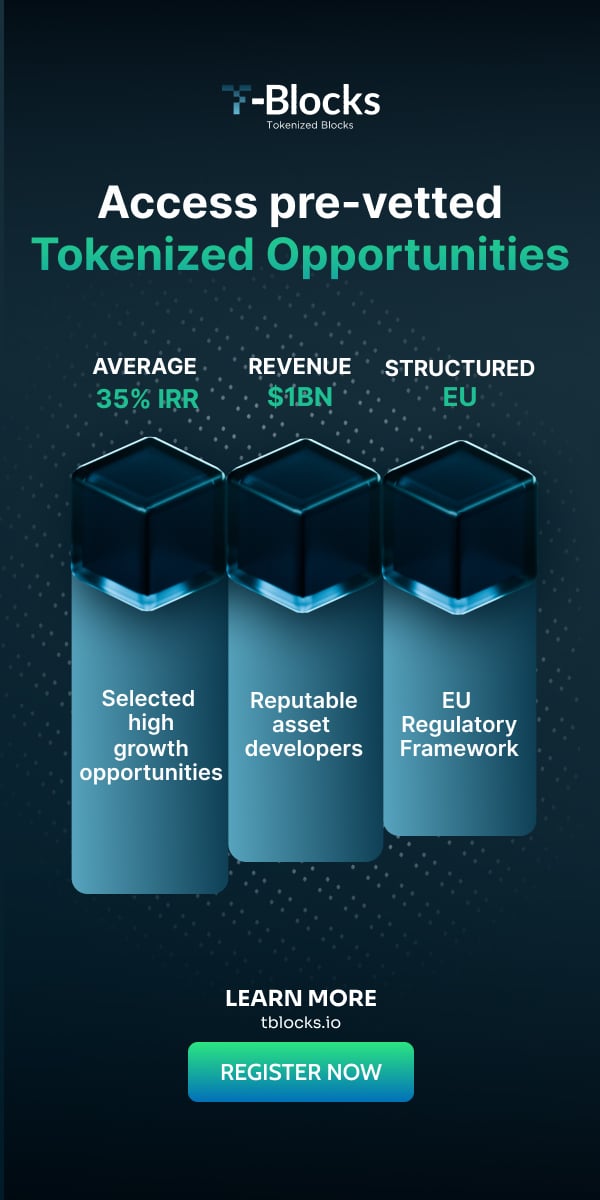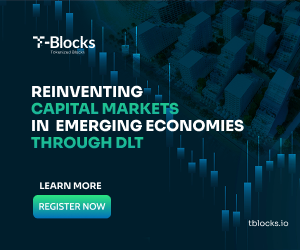Towards a European token economy – driven by the EU Commission!
– An interview with Dr Joachim Schwerin, Principal Economist at the European Commission
Who would believe that a heavyweight institution like the European Commission could be a highly visionary and progressive market driver?
Well, that is precisely what the European Commission has been several times already over recent years. We saw that very clearly in the case of the revised payment services directive, PSD2, which was probably the most progressive piece of European financial legislation in decades.
We saw it with the European Commission’s ban of different types of potentially toxic plastic used for instance, in children’s toys. And we saw it just a few months ago when the European Commission released its proposal for a new crypto asset law, the MiCA Regulation as part of its new Digital Finance Strategy. In these and other cases the European Commission has shown both a will and an ability to set a visionary agenda for Europe (and beyond, indirectly) on critical topics.
In this interview with Dr Joachim Schwerin, Principal Economist in the Directorate-General Internal Market, Industry, Entrepreneurship and SMEs at the European Commission, we talk about his and the Commission’s approach to the future of the token economy in Europe. With the MiCA Regulation the Commission has taken a bold step; but what are the story and the vision behind the new regulation? And where does it leave security tokens and STOs that are not regulated by MiCA?
Dr Joachim Schwerin would like to stress that in this interview he expresses his personal views, which do not necessarily represent an official view of the European Commission.
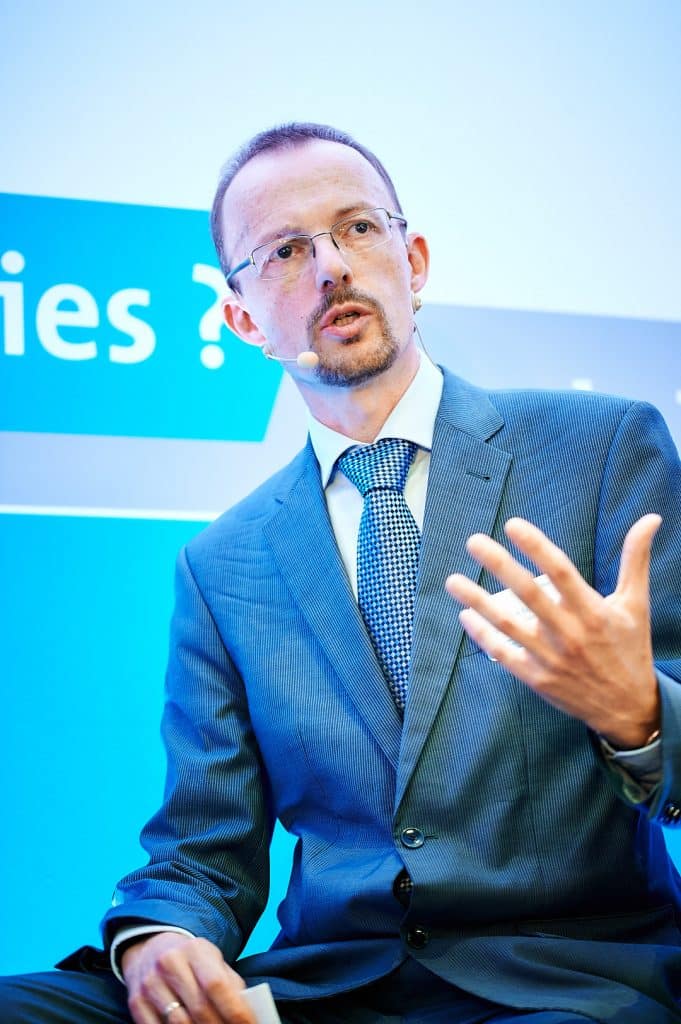
Michael Juul Rugaard (MJR): The recently announced MiCA proposal has been received quite positively in the blockchain and crypto space where regulatory clarification is hugely needed. Could you put some words on your – and I suppose, the Commission’s – vision behind MiCA?
Joachim Schwerin: The proposed Markets in Crypto Assets (MiCA) Regulation forms part of a broader package, the Digital Finance Strategy adopted on 24 September 2020. This strategy has several elements, two of which have particular relevance for applications built on distributed ledger technologies (DLT, which I will hereunder also summarise as “blockchain”): MiCA and our innovative pilot regime for market infrastructures based on DLT, which creates a safe regulatory environment for testing innovative DLT-based financial market infrastructures in the EU.
When it comes to the vision, the approach is even broader than this, as the Digital Finance Strategy itself is closely linked to the EU Digital Strategy (adopted on 19 February 2020) but also, for instance, our EU SME Strategy (adopted on 10 March 2020). The latter already includes two specific blockchain-related actions for SMEs, i.e. digital education and the objective of enabling SMEs to issue crypto assets and digital tokens. All of this is embedded into one of the Commission’s two big priorities: digitalisation of our economy.
I think that the generally positive market response to the MiCA proposal stems from a careful balancing between improving legal certainty and supporting the significant innovation potential of DLT. We chose a carefully calibrated risk-based approach that creates a new category of tokens: crypto assets that are not subject to securities laws but a lighter regime. It fosters innovation by speeding up token issuance, harmonising rules within the Internal Market and allowing every type of token to operate within the EU if it complies with the clearly phrased set of rules laid out by MiCA. This, in essence, is a market-driven, bottom-up path to digitalisation and tokenization that, from a philosophical perspective, benefitted from insights we gained when we started studying – without prematurely harmonising – decentralised alternative finance and crowdfunding a decade ago.
MJR: When did you realise that blockchain and crypto were about much more than shady scams and that it had to be taken seriously, and when did you first become aware of tokenization?
Joachim Schwerin: I have never believed that blockchain and crypto were shady scams, and I am not aware that anyone in the Commission ever expressed such an opinion. I liked the first emerging cryptocurrencies because of the principles they represent: entrepreneurship, decentralisation, privacy and resistance against a Big Brother mentality that increasingly infiltrates our societies. However, of course, it took time for me – as for everyone involved – to grasp the full potential, and until six or seven years ago I thought that cryptocurrencies were nice gimmicks but not much more.
I will not surprise you when I state that the turning point was, of course, the distinction between the first, rather crude applications of blockchain and the technology as such. We are all entitled to play with gimmicks, but there needs to be more to them if a public institution spending taxpayers’ money engages on such a new technology. There must be benefits to the public that go beyond speculative gains for investors.
Blockchain, once seen from a broader perspective, clearly delivers such benefits. It does so by decreasing costs and times needed to execute transactions of all sorts, but much more importantly, it creates a trusted and secure environment anywhere and at any time for strangers not trusting each other elsewhere. This is the core of what we now call the token economy.
MJR: Do you remember any particular occasions that convinced you about the potential of blockchain technology and the emerging crypto space?
Joachim Schwerin: A true game-changer was a brainstorming exercise within the European Commission in 2015 when all Commission officials were asked to propose EU innovation priorities for the next decades. Based on what I have just described, I proposed blockchain and its applications in FinTech and beyond, meaning applications in the real economy throughout all sectors and value chains.
Blockchain emerged from this brainstorming also as a favourite topic in many other policy fields, and at the end of the day, we published in 2016 a report called “Opportunity Now: Europe’s Mission to Innovate”, which summarised the Commission’s firm intention to “make together … some bolder bets on potential breakthrough technologies, notably genomics, the brain, distributed ledgers and quantum.” Blockchain as one of the four game-changers among all sorts of innovation in 2015/16, this was an amazing statement at that moment. And this mental exercise half a decade ago, in my opinion, gave the Commission the head start to very seriously engage with the different players in the blockchain/crypto universe and to gain experience and credibility.
When the ICO hype began in 2017, we were ready to understand its potential and to prepare for action, despite the manifold flaws that at that time still prevailed in many business models.
About the European Commission– The Commission helps to shape the EU’s overall strategy, proposes new EU laws and policies, monitors their implementation and manages the EU budget. It also plays a significant role in supporting international development and delivering aid.
– The Commission is steered by a group of 27 Commissioners, known as ‘the college’. Together they take decisions on the Commission’s political and strategic direction. A new college of Commissioners is appointed every 5 years.
– The Commission is organised into policy departments, known as Directorates-General (DGs), which are responsible for different policy areas. DGs develop, implement and manage EU policy, law, and funding programmes. In addition, service departments deal with particular administrative issues. Executive agencies manage programmes set up by the Commission.
https://ec.europa.eu/info/about-european-commission/organisational-structure/how-commission-organised_en
MJR: Since the crazy days of ICOs in 2017/2018 a lot has happened, and from the ICO crash arose the new concept of Security Token Offerings (STOs). What is your view on the already historical movement away from the anarchistic ICOs to the STOs, which are characterised by embracing regulation instead of avoiding it?
Joachim Schwerin: Before I tell you my view on this movement, I should clarify where I come from. During the financial crisis more than a decade ago, at the European Commission we became clearly aware of the overdependence of European SMEs on the banking system, which provided the vast majority of their finance. This is much more than in other parts of the world and an unhealthy situation when faced with systemic risk in the legacy system. We, therefore, asked ourselves how we could foster the emergence of viable alternatives. When crowdfunding started to emerge during that period, we saw its potential, and we tried to encourage the rise of decentralised, crowd-based matchmaking that soon extended beyond finance to also include innovation, access to resources and much more.
The crowd-X movement, to phrase it like this, has so far not managed to re-channel large volumes of finance towards decentralised platforms, but it was a philosophical game-changer that can hardly be overestimated. It revolutionised how many people, including us at the Commission, approached the governance of financial markets and helped us a lot in understanding innovation and change triggered by FinTech and blockchain.
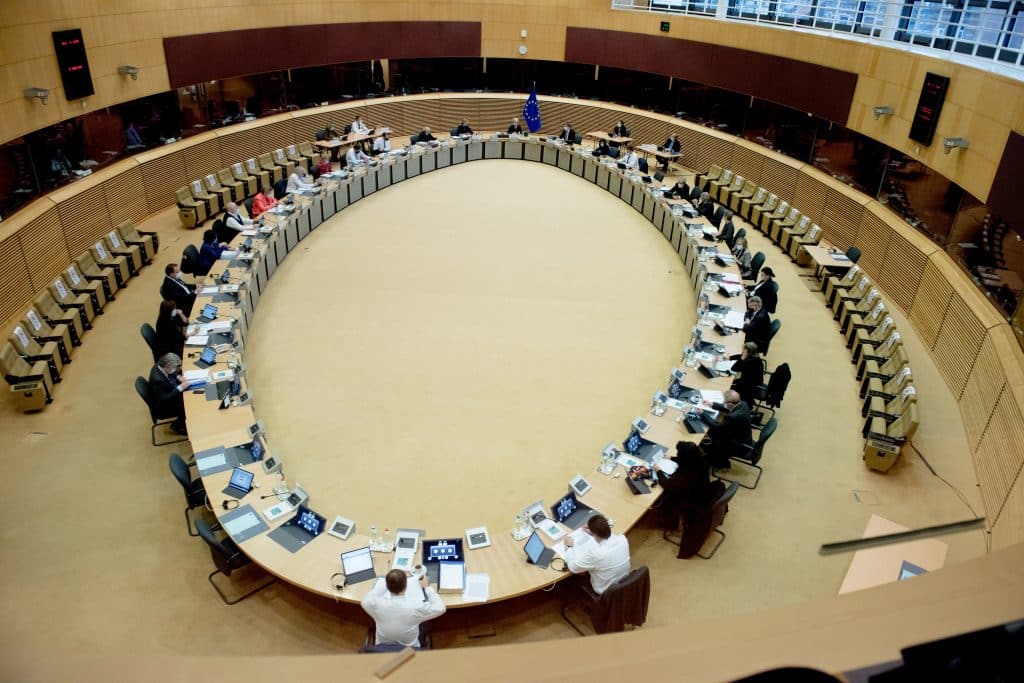
I was therefore thrilled when ICOs came up and started turning into a real possibility for the decentralised provision of billions of Euros by investors to SMEs and start-ups in very short amounts of time and in a potentially secure manner. To me, this was and is the future of finance.
We all know that the first wave of – as you call it anarchistic – ICOs soon ended, for many different reasons. We must, however, not see this as a failure but as a necessary intermediate step on our way towards a different ecosystem. Many companies I talked to, but also progressive intermediaries such as tech-savvy exchanges, found it essential to help design and use a safe variant of ICOs that complies with the regulation that – let us not forget this – was originally created for more traditional forms of finance.
In this sense, STOs proved helpful, and I think that for many risk-averse persons and organisations, they are a necessary next step that leads towards greater credibility and access to new forms of finance in the upcoming token economy, which is good. Nonetheless, in a world where entrepreneurs want to overcome obstacles and horses exist, in the long run, it might not be wise to put a saddle on a cow and teach it to jump. In my ideal world, there are horses and cows, and both serve useful but different purposes. This is why there is room for STOs but also for more “anarchistic” ICOs with an improved legal environment than during their first wave.
MJR: I know that you are interested in alternative ways of fundraising for SMEs, such as crowdfunding, and your last remarks clearly demonstrate this. What are the differences and similarities between other types of crowd-based finance and STOs?
Joachim Schwerin: I find that an excellent question, because it brings us to the real point. The short answer is that both form part of the same spectrum of alternative, ultimately tokenised, finance, which in the long run will become the standard for SMEs’ access to (digital) finance. We must not overestimate any differences in the details; the principles are the same, only with different functionalities and legal forms.
To elaborate on this, I start by noting that there is no lack whatsoever of capital to finance SMEs and start-ups; it is abundantly available in private hands. There is however a matching problem, which in part originates from distorted incentives that channel resources into less productive uses, and there is the technical question how to design matchmaking platforms that bring supply and demand directly together without an armada of – again unproductive – intermediaries. Blockchain addresses the latter aspect, a bottom-up approach that activates “the crowd” (in a broad and diverse meaning of the word) and is the solution to the former. This holds true for crowdfunding/ICOs/STOs/utility tokens/DeFi/you name it.
Differences are, of course, due to different objectives and interests of the parties involved. When we want to scale alternative forms of finance, including STOs, we must not start from an ideal cloud-cuckoo-land but from existing markets and the realities of regulation. We have, for instance, MiFID II, and it was essential to making it fit for digital securities, which the Commission proposed as part of the Digital Finance Strategy. When designing regulation for crypto assets, it was helpful to use a structure everyone in Europe knew well, which is why MiCA looks from the outset much like existing pieces of regulation (obviously, content-wise it is not, as the whole purpose is that crypto-assets are not financial instruments regulated by MiFID II). STOs address the need in particular of bigger investors to ascertain full regulatory compliance and to protect investments to a vast extent. This never has, is or will be the primary objective of decentralised crowd-based forms of finance, but at the end of the day, both are crowd-based movements, only that the crowds have different compositions.
MJR: In your opinion, what is the short and long term potential of security tokens? In particular, how significant a potential does the STO hold on longer terms as a means for companies to raise capital?
Joachim Schwerin: In the short term, security tokens are immensely important, but perhaps even more from an educational than a financial perspective. The volume of finance moved by STOs is still small, and although it will increase significantly soon, in my view the key benefit is that they allow both market sides as well as the remaining intermediaries to develop and test blockchain-based, digital, crowd-X-inspired business models in a relatively safe regulatory environment.
The long term will provide us with business models and technical solutions of which we today simply have no clue. In my professional career, I have never seen a business environment that changes so fast than the crypto domain, and the one thing we can usefully do is to build structures that help steer innovation towards forms that are generally in line with our basic ethical beliefs as democratic market-based societies, and this is it.
We are living in a world where central bodies, both political and economic in the form of BigTechs, aspire to control our future paths, but this is an illusion that looks pale and shallow if compared with the power of decentralised, incentivised, enabled crowds that take control of their own fate in secure and efficient environments. STOs will be part of that, and they will further improve, diversify and ultimately transform into something new. It does not matter if they will still be called STOs; their functions and core principles will survive.
Everyone active in the STO domain should therefore enjoy the ride and use the time it takes to learn and progress. Do not be concerned about the exact potential of STOs in the long term: the ride will be beneficial anyway, but perhaps in different forms than you now think.
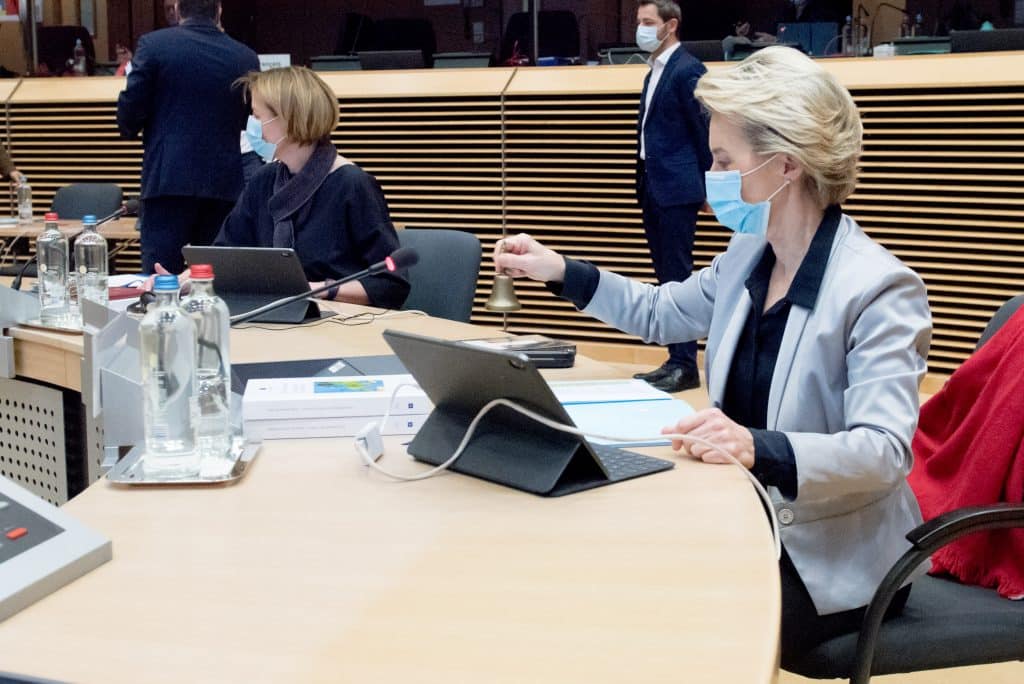
MJR: How would you like to see the development of the blockchain and crypto space going forward?
Joachim Schwerin: Personally, my preferred scenario is a token economy, i.e. the emergence of a disintermediated ecosystem in which SMEs of all sizes and sectors – after all, 99 % of businesses in the EU – can interact seamlessly with trading partners, customers and investors in a secure, digital environment. Disintermediation does not mean an absence of all intermediaries but the emergence of trustworthy intermediaries that add real value, without all the gatekeepers that prove so costly in terms of finance and data drain without providing real benefits.
In this token economy, supply and demand interact directly on secure and interlinked platforms, but all data remains the property of the data subject, in line with fundamental rights as we define, protect and enforce them in Europe. Transactions of tokens – i.e. bundles of digital rights and obligations – are based on smart contracts in combination with digital (micro-)payment systems, governed by civil law and effectively enforceable. Value chains will be fully integrated and based on a pan-European, non-oligopolistic blockchain architecture. As most SMEs are embedded in a local environment, the empowerment of the local crowd, both as customers and micro-investors, is critical.
MJR: What are the most significant challenges and opportunities in this scenario?
Joachim Schwerin: The challenge is twofold. First, as it is a very long way to get there, we must not be discouraged by setbacks, such as the occasional technological dead-end or some petty crypto fraud that will be instrumentalised by the legacy system. Second, we must protect the basic principles on which a token economy rests: privacy, social inclusion and technology-enabled trust outside the reach and control of allegedly “interested parties” that only drive their private agenda.
Against this stand the opportunities of such a token economy, which are perfectly clear; in a sense, what we are talking about is all-encompassing democratisation of finance, production and trade.
MJR: Several countries have proven to be quite progressive in the field of blockchain, crypto and security tokens – like Switzerland, Germany, Liechtenstein and more. To what extent has your work been inspired by some of these countries – and perhaps by progressive countries outside Europe?
Joachim Schwerin: We live in an epoch of incredibly rapid technological change in many different fields of technologies, and as these fields increasingly interact, the rate of innovation will accelerate further. Entrepreneurs drive this process from bottom-up, not countries from top-down. In my opinion, countries are “progressive” if they incentivise and enable regulators to understand the needs of entrepreneurs and if they limit regulation to the absolute minimum that safeguards protection against clearly defined and significant risks but not against anything that might look incomprehensible or dubious at first glance.
An increasing number of countries are preparing or have already adopted allegedly pro-innovation rules, but if the objective is to gain short-term advantages or if these rules remain limited to parts of the crypto empire, this strategy will fail. Being progressive in a sustainable manner means starting with profound philosophical, ethical and socioeconomic reflections that result in coherent changes not only of regulation but also of civil law, taxation, governance models that involve all citizens starting at a municipal level and, first and foremost, education. It is no surprise that countries that have a long and rich culture of liberal democracy and entrepreneurship, such as some Scandinavian countries but also Liechtenstein and Switzerland, are particularly progressive in the crypto domain. Also, it helps not to have a rigid legacy system that blocks innovation by default, which is why so many smaller countries are becoming fierce competitors in the crypto space that no one had on their radar ten years ago.
At the end of the day, it does not matter where good ideas come from, as long as they can disseminate. Moreover, there is more than one way towards the top. As an economic historian by trade, I compare the current epoch with the era that started more than 500 years ago: that of Europe reaching out globally to discover the planet, settle and trade. Half a millennium ago, two small countries took the lead in this, Portugal and the Netherlands, with two very different governance models but similarly successful. This is what we will also see in hindsight two to three decades from now. Europe has a lot of diverse yet competitive democratic and market-based business and governance models in the running. Some will prevail; we just do not know yet which, but this does not matter. Variation is the precondition for successful selection, and this is the – early – stage in which we find ourselves today, where we do not know what the future will look like, but we can have a lot of confidence that our values will prevail.
Photo: The Berlaymont building illuminated in orange, by night. Photographer: Lukasz Kobus
More Articles:
Competing countries in the token economy
Top 10 Security Token and Tokenization Articles of 2020











